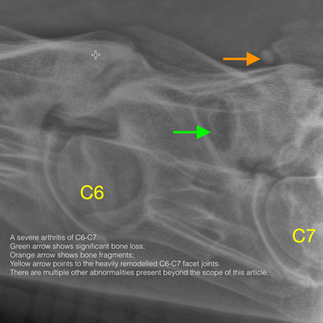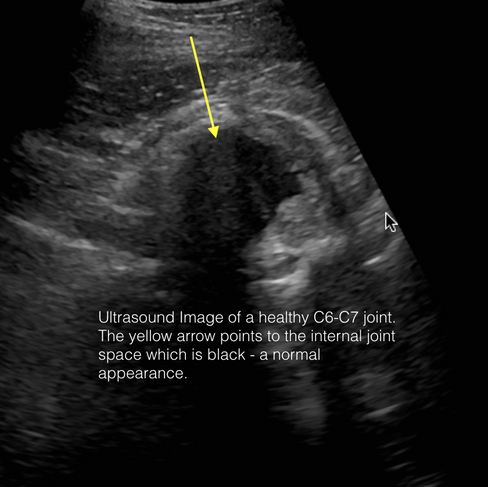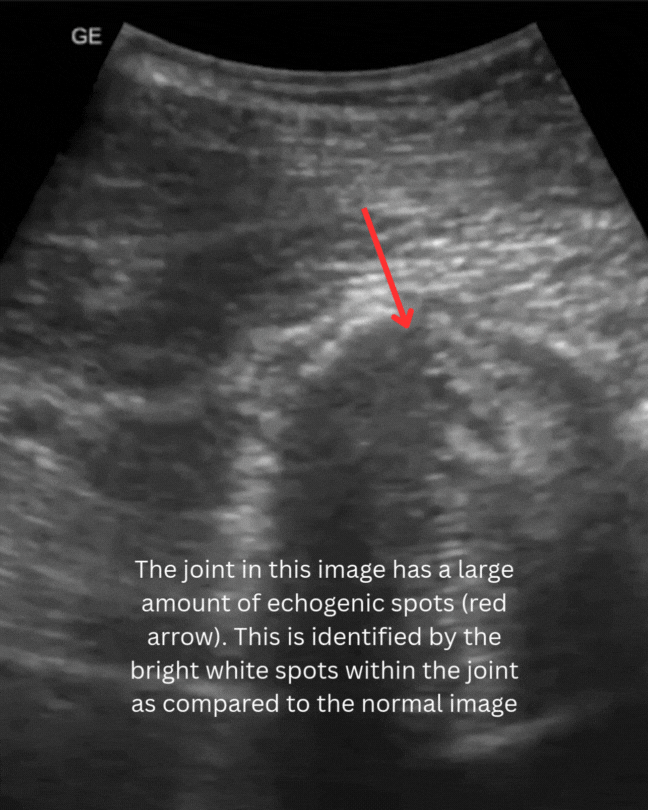Neck Pain and Dysfunction in Horses
- Anushka von Oppen
- Apr 27
- 4 min read
Updated: Jul 11
The root cause of neck pain and dysfunction in horses can be difficult to accurately diagnose, as neck issues can vary greatly in their signs and symptoms.

Signs and Symptoms
The signs and symptoms of neck issues can be as subtle as a decline in the horses’ performance, or as dramatic as sudden onset of dangerous behaviour.
Some common signs that may indicate neck pain in your horse include:
Issues with bending or turning the neck
Stiffness in the neck or back
Resistance or difficulty turning in one direction
Sensitivity or soreness to touch on the neck and/or back
Headshaking
Decreased performance
Reluctance to work
Behavioural changes, including aggression or irritability
Bucking, rearing, refusing to jump
Defensive behaviour during saddling and/or ridden work
Variable neurological symptoms and/or lameness in the forelimbs and/or hindlimbs (weakness, exaggerated gait, stumbling, difficulties backing up)
Functional Anatomy: Neck Position Under Stress

The neck experiences substantial biomechanical stresses during ridden work, particularly in specific positions:
Hyperflexion at the Poll ("Rollkur"): Excessive flexion places significant strain on the upper cervical vertebrae (C1–C3), compromising normal gliding joint mechanics and potentially leading to degenerative changes or inflammation. Prolonged hyperflexion can also cause muscular tension and imbalance, particularly affecting muscles such as the splenius and semispinalis capitis, leading to discomfort and reduced range of motion.
Hyperextension of the Lower Neck: Seen when the horse's head and neck carriage are overly elevated, causing strain on the facet joints of the lower cervical vertebrae, particularly C5–C7. This posture can contribute to facet joint inflammation and accelerated wear.
Weak Cervicothoracic Junction (Thoracic Sling): A compromised thoracic sling results in the neck's base sitting lower, exacerbating hyperextension stress at the cervicothoracic junction. Strengthening thoracic sling musculature is essential to prevent chronic strain.
Common Neck Conditions in Horses
Understanding cervical anatomy aids in identifying common pathologies:
Osteoarthritis of the Facet Joints: A common finding in the neck. Degeneration or inflammation occurs due to repetitive stress, hyperflexion, hyperextension, or trauma. Horses may exhibit arthritic changes without significant clinical signs; therefore, the degree of remodelling must be interpreted relative to the horse’s age and symptoms. Inflammation can cause pain and may compress the nerve roots exiting the spinal canal, or the spinal cord itself. Horses may present with forelimb or hindlimb issues depending on the location of the pathology.
Equine Caudal Cervical Morphological Variation (ECCMV also known as ECVM): A condition increasingly recognised following post-mortem studies. In ECCMV, the caudal ventral tubercle of C6 is absent or transposed onto C7. The absence of normal muscular attachments can lead to instability at C6–C7, contributing to asymmetrical joint loading, degeneration, and discomfort.
Cervical Vertebral Stenotic Myelopathy (CVSM): Also known as Wobbler Syndrome, this involves narrowing of the spinal canal, compressing the spinal cord and causing progressive neurological symptoms, including a ‘wobbly’ gait due to poor musculoskeletal control (ataxia).
Muscular Tension: Commonly seen in practice, affecting the brachiocephalicus, cervical serratus, and subclavius muscles. This tension often coincides with tightness in the trapezius, triceps, and deltoid muscles, leading to discomfort, reduced range of motion, and compromised performance.
Diagnostic Challenges
The base of the neck and cervicothoracic region presents complex diagnostic challenges due to anatomical intricacies and limitations in imaging. This region is difficult to fully assess using conventional radiography, and ultrasonography can be technically challenging due to overlying structures and depth.
Radiographs, however, are valuable for assessing vertebral alignment, detecting enlargement of facet joints, evaluating intervertebral foramen narrowing, and identifying malformations such as those associated with ECCMV. They can also help assess spinal canal narrowing or vertebral instability.
Ultrasonography is highly useful for evaluating the soft tissues of the joints. It allows for side-by-side comparisons, assesses joint fluid and surrounding structures, and facilitates targeted treatment through ultrasound-guided injections.
Advanced imaging such as scintigraphy or CT can provide deeper insights; however, CT access for this region remains limited in Victoria.
In clinical practice, diagnosis typically involves a combination of:
Careful physical examination
Evaluation of postural and movement patterns
Targeted imaging
Diagnostic analgesia to localise sources of discomfort
Treatment and Management

The treatment and management of neck pain depend on the underlying cause; multiple conditions may coexist. Horses presenting with neurological symptoms may pose a risk to themselves and riders and may require retirement from ridden work or handling only by experienced individuals.
Medical therapy may include ultrasound-guided injections into facet joints or around nerve roots using corticosteroids or regenerative therapies such as IRAP or Pro-Stride. This can be combined with a treatment called mesotherapy, which acts to blockade pain pathways.
Physical therapies, including chiropractic and massage therapy, can assist in improving mobility and reducing nerve-related discomfort.
The cornerstone of management revolves around rehabilitation and correct exercise:
Strengthening the small stabilising muscles of the neck and back
Building the supportive musculature of the thoracic sling and core
Incorporating polework to improve limb awareness and thoracic sling engagement
Regular post-exercise stretching to maintain flexibility and joint range of motion
Ensuring correct saddle fit is vital, alongside adjusting riding techniques — for example, limiting excessive collection and allowing the horse to adopt a comfortable frame while undergoing rehabilitation.
Conclusion

Neck pain is a common but complex condition affecting performance and welfare in horses. Early recognition, accurate diagnosis, and prompt management are key to preventing long-term issues.
Proactive strategies include:
Implementing stretching routines to promote range of motion
Building core strength before introducing collection
Minimising biomechanical stress during ridden work
Scheduling regular chiropractic and veterinary assessments
If you have any concerns about your horse's neck health, please contact us HERE to book an appointment with Melbourne based equine vet.











